5 Car Fluids You Should Check Monthly (And How)


Vehicle maintenance requires regular attention to several fluid systems that keep cars running safely and efficiently. Monthly fluid checks can prevent costly repairs and extend a vehicle’s lifespan by catching problems before they become major issues. These essential fluids work together to protect the engine, transmission, brakes, and other critical components from damage.
Five key fluids require monthly monitoring: engine oil for lubrication, coolant for temperature regulation, brake fluid for stopping power, transmission fluid for smooth shifting, and power steering fluid for easy maneuvering. Each fluid serves a specific function and has different inspection methods and maintenance requirements that drivers can learn to perform themselves…
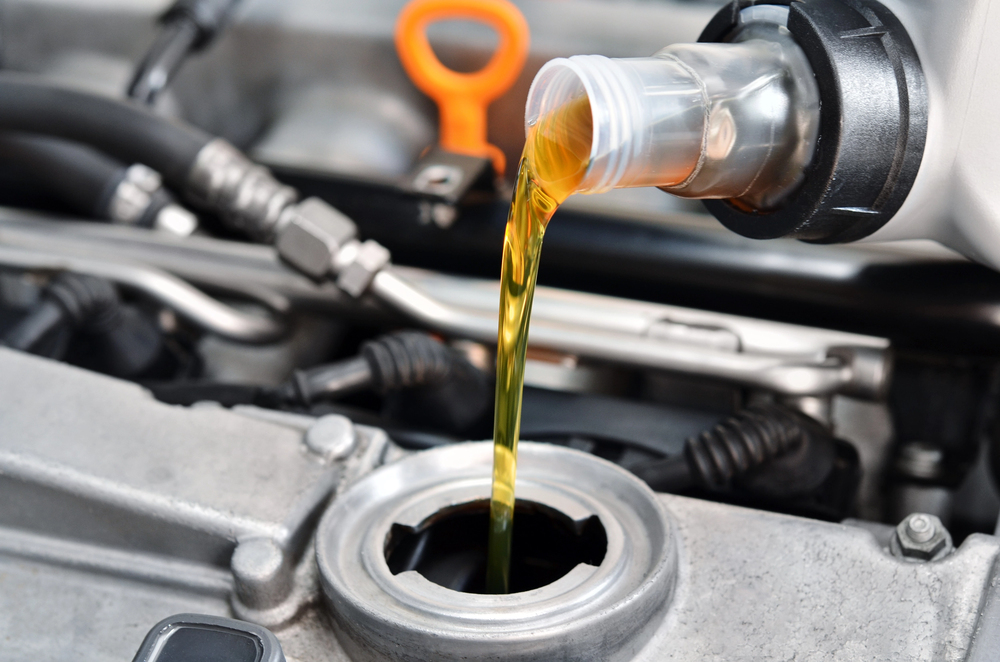
1) Engine Oil: Check with the dipstick for level and clarity, refill or change as needed
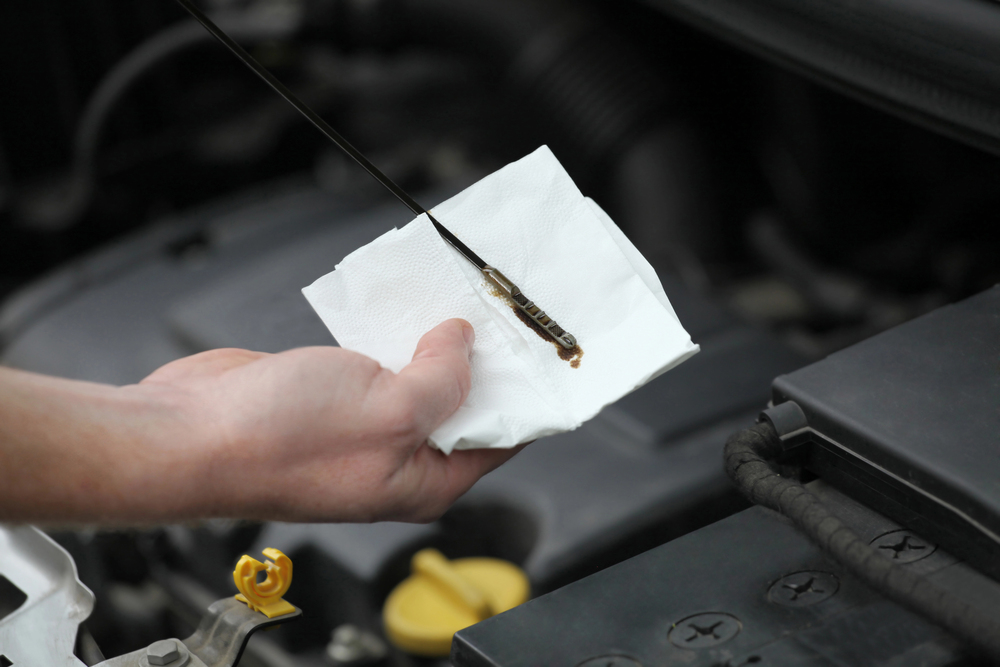
Engine oil lubricates moving parts, reduces friction, and helps cool the engine. Regular checking prevents expensive damage and keeps the engine running smoothly.
Park the car on level ground and turn off the engine. Wait 5-10 minutes for the oil to settle back into the oil pan. This gives an accurate reading.
Locate the dipstick handle, which usually has a bright color or loop design. Pull the dipstick straight out completely. Clean it with a rag or paper towel to remove all oil residue.
Insert the dipstick fully back into its tube. Push it down completely to get a proper measurement. Pull it out again immediately to read the oil level.
Check where the oil film ends on the dipstick. The level should fall between the minimum and maximum marks. Low oil requires immediate attention to prevent engine damage.
Examine the oil’s color and consistency. Fresh oil appears amber or black, while dirty oil looks thick or contains metal particles. Dark, gritty oil needs changing regardless of the level.
Add oil through the filler cap if levels are low. Pour slowly and recheck frequently to avoid overfilling. Change the oil completely if it appears contaminated or has exceeded service intervals.
2) Coolant/Antifreeze: Inspect the reservoir level and top up with the correct mixture when low
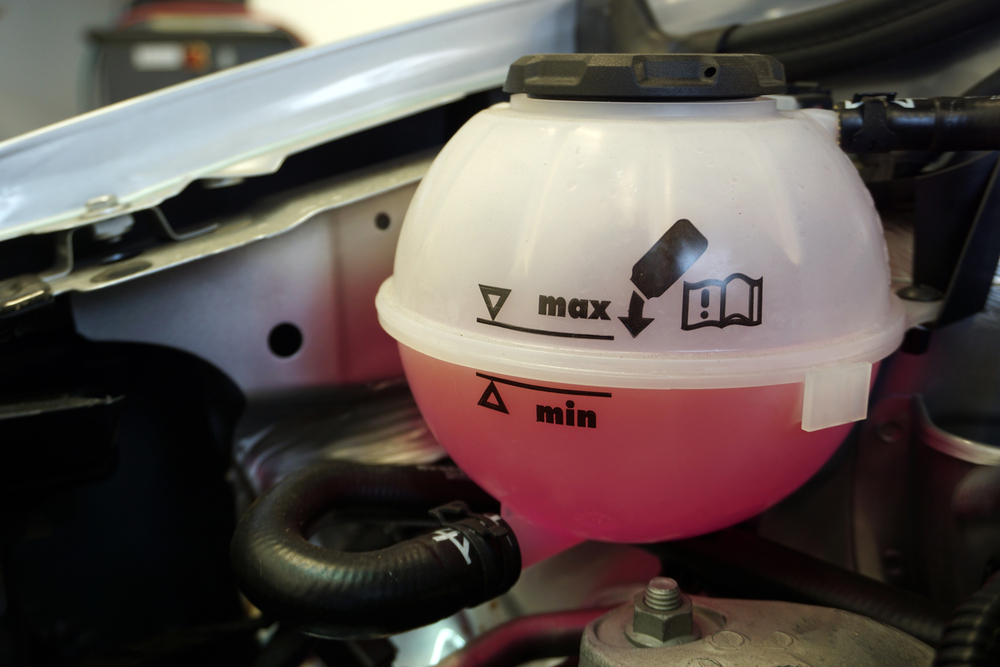
Coolant regulates engine temperature and prevents freezing in winter months. Regular monthly checks prevent costly engine damage from overheating.
Locate the coolant reservoir near the radiator. The translucent plastic tank has minimum and maximum fill lines marked on the side.
Check coolant levels only when the engine is completely cool. Hot coolant creates pressure that can cause burns if caps are removed prematurely.
The fluid level should sit between the minimum and maximum marks. Low levels indicate possible leaks or normal evaporation over time.
Use a 50-50 mixture of antifreeze and distilled water for optimal performance. This ratio provides the best cooling properties and freeze protection.
Add the correct coolant type specified in your owner’s manual. Different vehicles require different formulations that should not be mixed together.
Pour the mixture slowly into the reservoir until it reaches the maximum line. Replace the cap securely after filling.
Watch for coolant color changes or contamination. Clean coolant appears bright and translucent while old coolant looks rusty or cloudy.
3) Brake Fluid: Verify the level in the master cylinder and use the manufacturer-recommended type if topping off
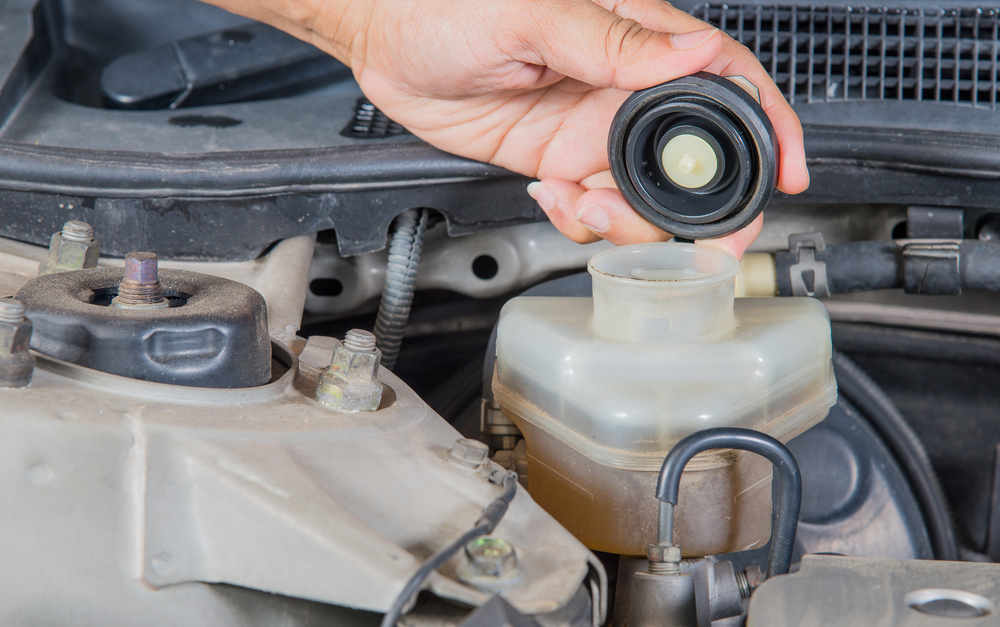
Brake fluid plays a critical role in your vehicle’s hydraulic braking system. The master cylinder contains this fluid and converts pedal pressure into stopping power.
Locate the brake master cylinder under the hood, typically mounted on the firewall near the driver’s side. The reservoir sits on top of the cylinder and contains brake fluid for the entire braking system.
Check the fluid level by examining the transparent reservoir or removing the cap. The fluid should reach the “Full” line marked on the side or sit within half an inch of the top of each chamber.
Low brake fluid levels can indicate worn brake pads or potential leaks in the system. Fluid that appears dark, contaminated, or contains debris needs replacement rather than just topping off.
Always use the specific brake fluid type recommended in your owner’s manual when adding fluid. Common types include DOT 3, DOT 4, and DOT 5, and mixing different types can damage the braking system.
Clean the reservoir cap before opening to prevent dirt from entering the system. Add fluid slowly and avoid overfilling, which can cause problems during normal brake operation.
4) Transmission Fluid: Check level and condition using the dipstick while engine is warm; add only if necessary
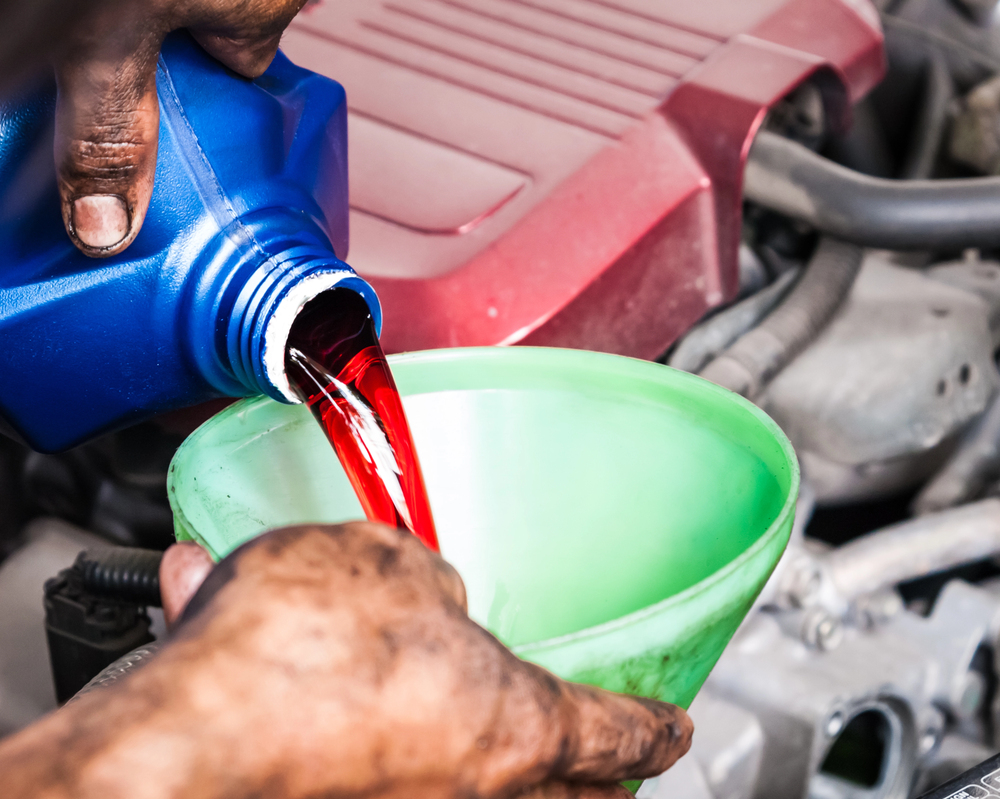
Transmission fluid lubricates and cools the transmission system. Low or dirty fluid can cause expensive damage and poor shifting performance.
Start by warming the engine and running it for several minutes. Park on level ground and keep the engine running with the transmission in park or neutral.
Locate the transmission dipstick, which differs from the oil dipstick. Pull it out and clean it completely with a rag or paper towel.
Insert the dipstick fully back into the tube. Remove it again and check the fluid level against the marked indicators.
The fluid should fall between the minimum and maximum marks. Check the fluid color and consistency while examining the level.
Healthy transmission fluid appears bright red and flows smoothly. Dark brown, black, or burnt-smelling fluid indicates replacement is needed.
Add fluid only if the level sits below the minimum mark. Use the exact type specified in the owner’s manual and add small amounts at a time.
Overfilling can cause foaming and transmission problems. Recheck the level after adding fluid to avoid exceeding the maximum mark.
5) Power Steering Fluid: Inspect the reservoir for proper level and refill with appropriate fluid if low
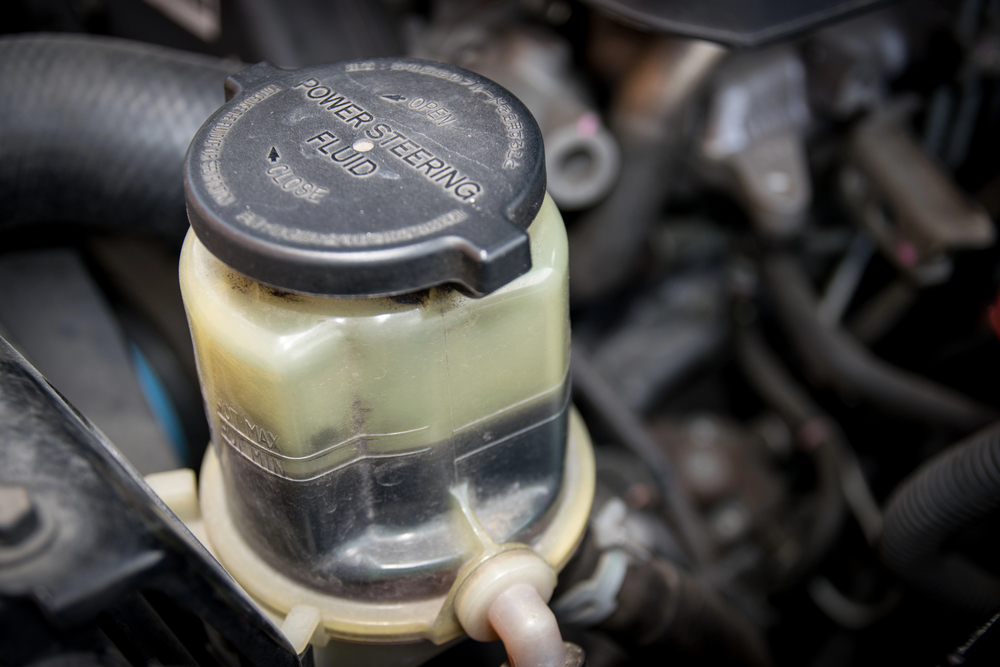
The power steering system relies on pressurized fluid to help turn the front wheels smoothly. Low fluid levels can cause difficult steering and potential system damage.
Locate the power steering reservoir under the hood near the engine bay. The reservoir typically displays a steering wheel icon and sits close to the serpentine belt area.
Park the vehicle on level ground and allow the engine to cool completely. Remove the reservoir cap and check the fluid level against the “MIN” and “MAX” markings on the container sides.
Healthy power steering fluid appears clear or light amber in color. Dark, gritty, or contaminated fluid requires replacement rather than simple refilling.
If the fluid level falls below the minimum line, add the manufacturer-specified power steering fluid type. Use a funnel to prevent spills and add fluid gradually to avoid overfilling.
After refilling, replace the cap and start the engine. Turn the steering wheel from lock to lock several times to circulate the new fluid and remove air bubbles from the system.
Check the fluid level once more after this bleeding process and top off if necessary.
Understanding Proper Fluid Maintenance
Regular fluid maintenance prevents expensive repairs and keeps vehicles operating safely. Monitoring fluid levels and quality protects engine components from damage and extends vehicle lifespan.
Benefits of Regular Checks
Monthly fluid inspections save car owners hundreds of dollars in repair costs. Early detection of low fluid levels prevents catastrophic engine damage that can cost thousands to repair.
Regular checks extend vehicle lifespan significantly. Fresh fluids lubricate moving parts properly and prevent excessive wear on expensive components like transmissions and engines.
Safety benefits include maintained braking power and proper steering function. Low brake fluid reduces stopping ability, while insufficient power steering fluid makes vehicles harder to control.
Fuel efficiency improves when all fluids remain at proper levels. Clean engine oil reduces friction, allowing engines to operate more efficiently and consume less fuel.
Vehicle reliability increases dramatically with consistent fluid maintenance. Cars with proper fluid levels experience fewer breakdowns and unexpected repairs.
Common Signs of Fluid Issues
Visual indicators on the ground reveal fluid leaks immediately. Different colored puddles indicate specific fluid types – red for transmission fluid, green or orange for coolant, and dark brown for engine oil.
Dashboard warning lights alert drivers to critical fluid problems. Oil pressure lights, temperature gauges, and brake warning indicators signal immediate attention requirements.
Performance changes indicate fluid deficiencies. Hard shifting suggests low transmission fluid, while squealing brakes point to low brake fluid levels.
Engine overheating frequently results from insufficient coolant levels. Steam from the engine bay or rising temperature gauges require immediate vehicle shutdown.
Unusual noises often accompany fluid problems. Grinding sounds from brakes or knocking from engines indicate fluid-related component damage.
Fluid discoloration signals replacement needs. Dark, thick oil or rusty coolant indicates contamination and requires immediate attention.
Best Practices for Safe Fluid Inspection
Proper safety equipment and correct disposal methods protect both the vehicle owner and the environment during fluid checks. Having the right tools ready prevents spills and contamination.
Tools You’ll Need
A vehicle owner should gather specific tools before checking fluids to maintain safety and accuracy. These items prevent contamination and make the inspection process cleaner and more precise.
Essential inspection tools include:
- Clean funnel for adding fluids without spills
- White cloth or paper towels for checking fluid color and consistency
- Flashlight or headlamp for better visibility under the hood
- Disposable gloves to protect hands from chemicals
The funnel prevents fluid waste and contamination during top-offs. A white cloth shows fluid color clearly, which indicates condition better than colored rags.
Good lighting reveals fluid levels on dipsticks and in reservoirs. Many fluid checks require looking into dark areas of the engine bay.
Disposable gloves protect skin from brake fluid, which can cause irritation. They also prevent oils from getting on hands and transferring to other surfaces.
Additional helpful items include a small container for catching drips and replacement caps or plugs in case originals are damaged during inspection.
How to Dispose of Old Fluids Responsibly
Used automotive fluids require proper disposal to protect groundwater and soil from contamination. Most automotive fluids contain chemicals that harm the environment if poured down drains or onto ground surfaces.
Auto parts stores accept used motor oil and oil filters for recycling at no charge. Many locations also take transmission fluid, differential oil, and power steering fluid.
Service stations and quick-lube shops typically accept used fluids from customers. Call ahead to confirm which types they accept and their drop-off procedures.
Municipal recycling centers often have hazardous waste collection days or permanent drop-off sites. These facilities handle brake fluid, coolant, and other automotive chemicals safely.
Used coolant contains toxic ethylene glycol that attracts animals and children due to its sweet taste. Store it in sealed, labeled containers away from pets and people.
Brake fluid absorbs moisture and becomes corrosive over time. Keep it in its original container or transfer it to a clearly marked bottle for transport to disposal facilities.
Never mix different fluid types in the same container, as this can create disposal problems and safety hazards.
If you enjoyed this article, be sure to follow us on Microsoft Start.










